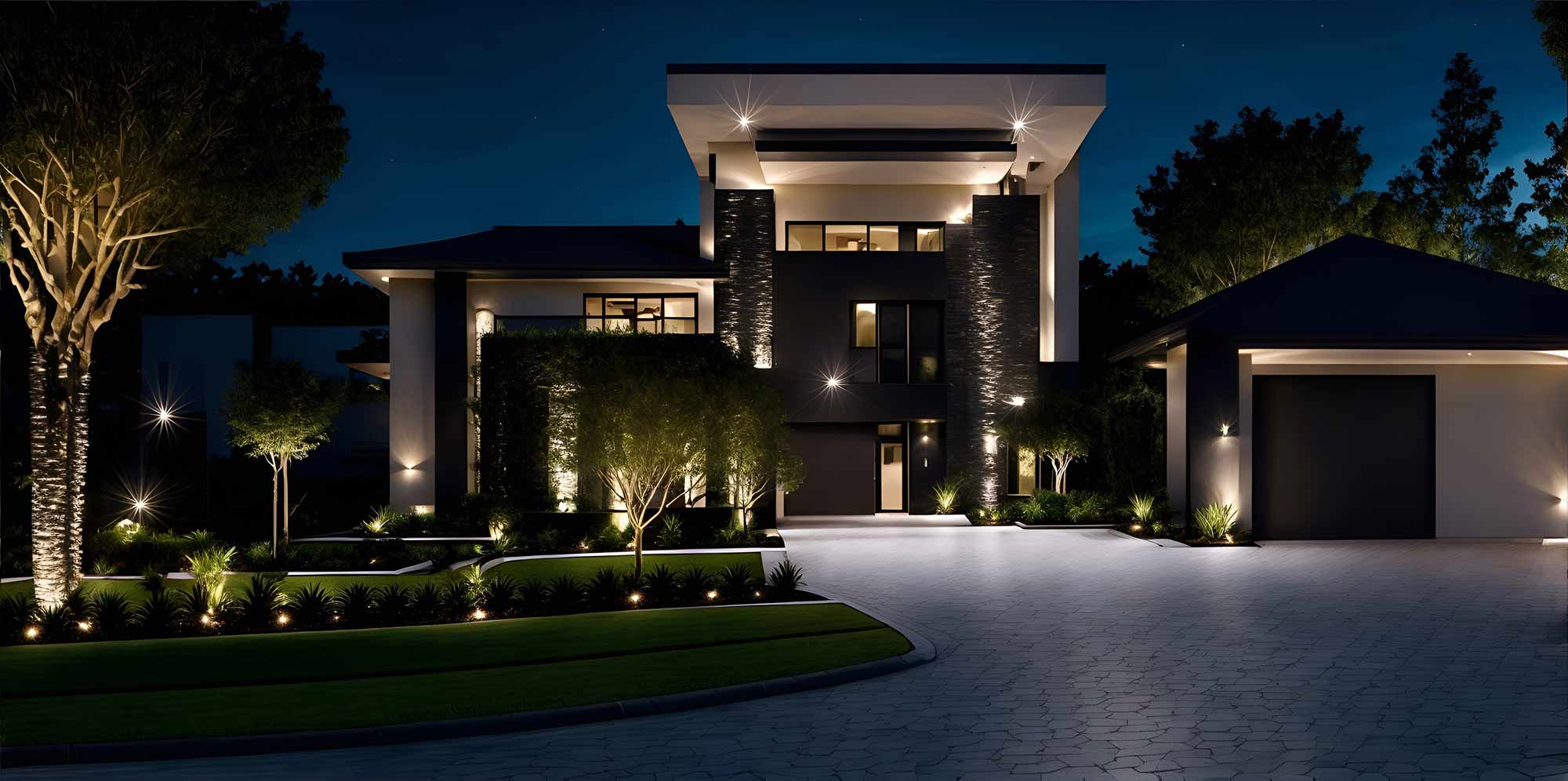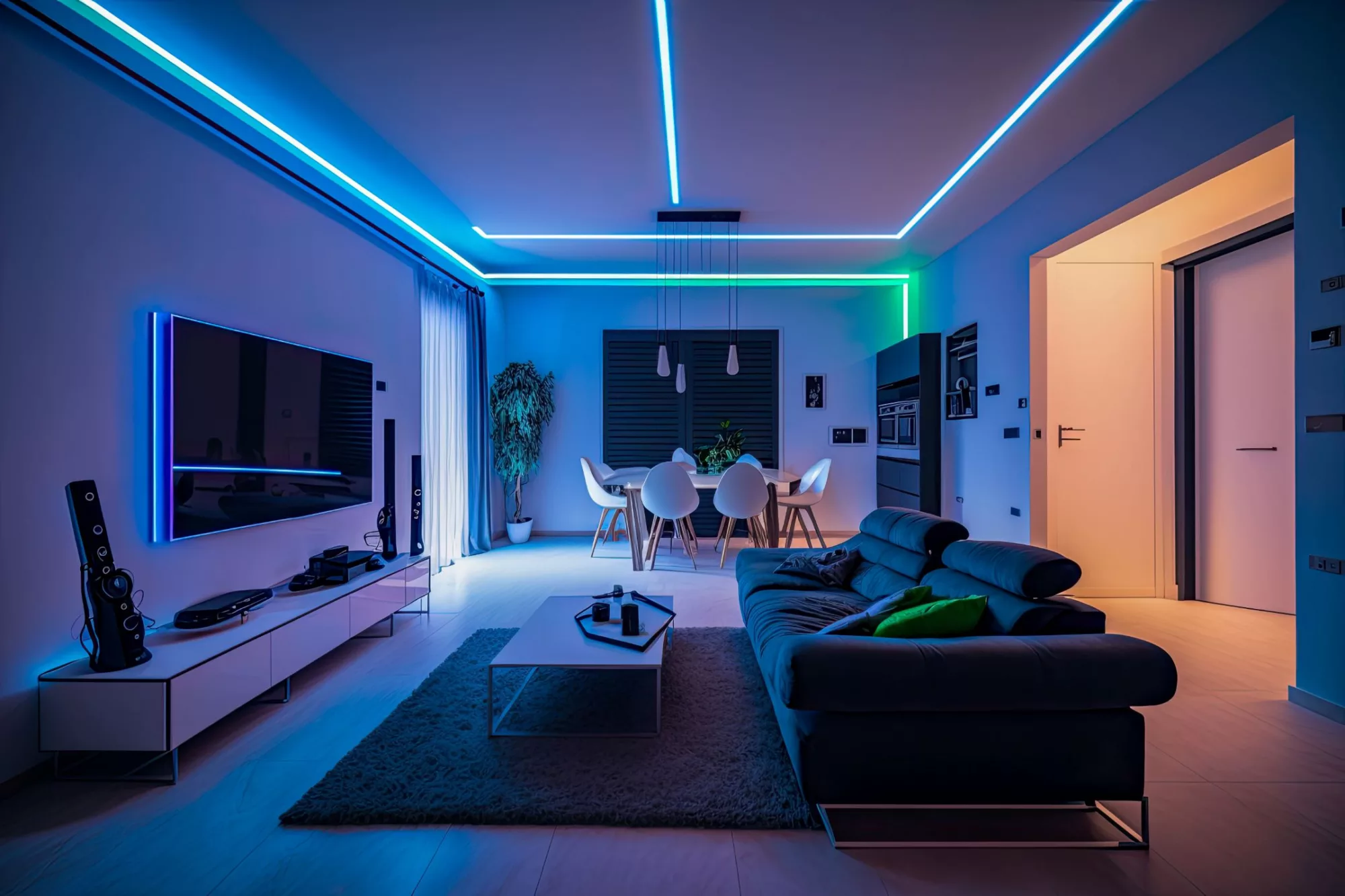Low voltage landscape lighting became prominent in the residential market during the 1950s. This period marked the beginning of its widespread adoption for home...
In 2011 the American Journal of Public Health published a study showing that exposure to bright, cool, fluorescent lights causes a 12% increase in eye diseases. This also applies to people with eye disease or eye surgeries, including laser. That means that the wrong kind of artificial lighting can worsen eye disease.
Lighting design and proper lighting fixtures can be an often overlooked yet crucial factor in your health, and health is priceless. To help yourself you must think about the spaces where you spend most of your time. If you have just bought a house or have outgoing construction/remodeling, think about your lighting design or hiring a lighting designer early in the process to plan the budget and location of the fixtures. If you are considering upgrading your lighting, no worries; it’s not too late! Nowadays, premium brands offer a wide range of lighting products meant for remodeling. Choosing the proper lighting fixtures and lighting design requires careful consideration.
Any source of lighting has the potential to be harmful, so it’s not only about artificial light sources. Wearing a hat or sunglasses is the easiest way to protect yourself from the sun. But that won’t do any good in indoor spaces. To protect yourself from harmful light, you need to choose suitable lamps. Lamps that will give you enough light intensity to perform your daily tasks but, at the same time, will not cause damage to your retinas. Blue light is the most damaging light wavelength. The most important thing to remember is to avoid lighting with a high color temperature; generally, all light sources emit light in more than 3500 K. But light temperature is not everything. There are more technical aspects of the lamp that you need to take into account, like CRI index, lumens output, dimming capacity, and last but not least, load type. You can read more about those terms here.
Workspace
Many companies use inexpensive fluorescent lighting without much thought or the expertise of a lighting designer. The cost of the lamp is a relatively inexpensive option; unfortunately, your eyes pay the price. Of course, you can not control the light source everywhere, but it always helps to request better options from your employer. Sometimes they are not aware of the consequences of utilizing the wrong lighting. With lighting control you can even change the intensity and temperature of your lights.
However, nowadays, many people work from home. If that’s the case, or you are the business owner and want to save the vision of you and your employees, you are in the right place.
We already went through the fluorescent lights, which aren’t the only cause of the problem. Compact fluorescent lamps (CFL) can also trigger the same symptoms, like soreness, burning, watery or dry eyes, double vision, and increased sensitivity to light. Headaches are also common, particularly if the lights over your head flicker.
Too much light can cause vision problems in the long run, but the lack of proper lighting in the areas where you utilize your sight the most is also harmful.
Ideally you must hire a lighting designer to perform a photometric analysis of the space and, based on engineering calculations, specify the fixtures that will provide a healthy light dose. Photometric analysis helps you make a decision based on calculations, not just how you feel within a space.
Sight Conditions Caused or Worsened by Lighting
Age-Related Macular Degeneration, Amblyopia (Lazy Eye), Astigmatism, Cataracts, Color Blindness, Diabetic Retinopathy, Dry Eye, Floaters, Glaucoma, Pink Eye, Retinal Detachment. I listed only the most common sight conditions. People who experience these conditions can help themselves by utilizing appropriate lighting design. Choosing a high-quality light source can significantly impact your daily tasks.
Factors to Consider when Choosing the Best Light Source for Sight Loss Conditions:
1. Light Brightness
The amount of light emitted from the light fixture onto a surface is measured in Lux. Refrain from falling for the rule. The more light, the better. This depends on the sight condition you have. The easiest way to check what works best for you is to go to the closest showroom with premium lighting and study how different brightness levels work. Take one of the books with you and try to read a few verses next to the lighting fixture. That’s one way. The other is to hire a lighting designer that understands sight condition problems. A lighting designer can help you with that.
2. Optimal Color Temperature for Your Eyes
Kelvin degrees indicate the color temperature of the light. The light that has yellowish color is up to 2700K. Usually, the average color of light in mid-day is white, around 4800 K – 6500K. This is regarded as the healthiest light for your eyes to perform daily tasks, such as reading and cooking. However, this might be harmful light for people with vision problems, unlike sight loss. Note that this light temperature is very high, so it’s better to consult your choice with a specialist. Regarding premium lighting, lighting fixtures with color temperatures around 3500-4000K might seem bright. That depends on the number of lights in the space, distance from the ceiling to the surface, and beam angle.
3. Glare Index
Glare is one of the biggest problems regarding tiredness, irritation, reduced vision, or dry eyes after Lasik eye surgery. To minimize the glare emitted by artificial lighting, avoid all lighting sources that imitate excessive light or where the light source is visible to the user. If glare is the main problem, you should consider lighting control devices. Suppose you don’t have a lighting control system in your house already. In that case, you can always upgrade your lighting keypads, or add dimmers where you perform most of your daily tasks, like the office, kitchen, and reading areas. Remember to check if the light source of your choice is dimmable. If yes, check dimming compatibility.
4. Placement of the Lighting Fixture
It’s about more than just the technical features of the lighting fixture. It’s also about the placement of the light source. Think about where you will be while performing a specific task. For example, if you replace your lights in the office, make sure the source of the light will not be placed behind your back because you will create a shadow just by sitting at your desk, and the light will not illuminate the documents that you are about to analyze, read or write.
5. CRI Index
The CRI index measures the ability of the light to showcase true colors. The Sunlight CRI index is 100. So the closest artificial lighting’s CRI index gets to 100, the better. Usually, good light’s CRI index stands around 90 +
I am a lighting designer, and a few years ago, I almost lost my vision due to retinal detachment. I had successful surgery, and a few years later, I had Lasik surgery, so I perfectly understand how bad lighting can make my daily life difficult.
If you need advice on proper lighting, contact us, and we will be more than happy to assist you. Based on my experience, I am dedicated to helping others with eye disease and making their life easier.
Lighting is everything. Everything that we see is a reflection of light.
Patrycja Glod
LIGHTING DESIGNER
Reading time 4 min 44 sec




